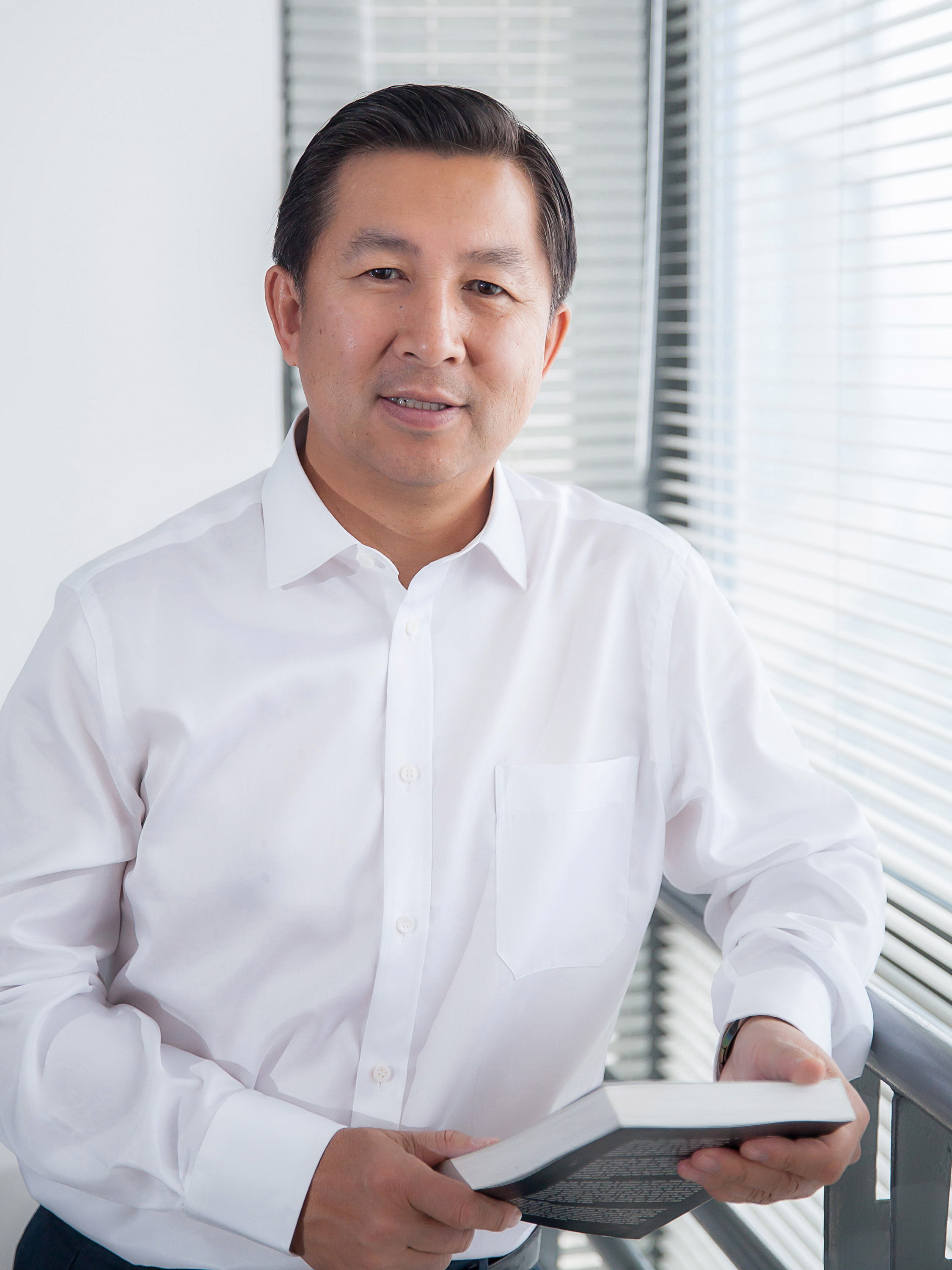Tackling Earth’s tremors and cancerous tumors
Jie Zhang, PhD ’97

Forecasting earthquakes is complex, relying on specialized analysis of minute signals from the Earth’s crust. Cancer treatment is also a highly complex field, involving thousands of researchers and billions of dollars worldwide. Either would be enough to fill the waking hours of any scientist. But the work of Jie Zhang, PhD ’97, a geophysicist and biotech entrepreneur, spans both fields—from the largest seismic tremors to the smallest tumor cells.
“The two subjects seem unrelated but share one thing in common: an impossible mission,” Zhang says.
After grad school, Zhang founded GeoTomo, a company that uses imaging technologies to search for energy resources underground. He soon realized that similar technology could be used on a smaller scale to examine the human body. In 1999, he founded Miles Medical, setting the stage for his dual career.
In 2011 he returned to China and founded the Geophysical Research Institute at the University of Science and Technology in Hefei, where he is a professor of geophysics. His connections there led to the launch of EARTHX, an automated system for monitoring and forecasting earthquakes that uses a network of some 300 sensors in Sichuan Province to identify tremors as subtle as one made by a coffee cup falling from a table onto the ground. “People focus on large tremors, but you really need to focus on the small earthquakes,” he says. “That will give you evidence that the big one is coming.” In the near term, EARTHX could provide precious days of warning for people to evacuate before an earthquake occurs.
In 2017, he invested in Cello Therapeutics and Cellics Therapeutics, two startups aimed at using nanoparticles in medicine, and took on the role of CEO at both companies. Zhang now spends most of his time in San Diego, directing Cello’s cancer research. In animal studies involving five cancer types, the company’s leading product, a nanoparticle coated with cell membranes that’s used to deliver cancer drugs, “effectively eliminated or inhibited tumor growth,” according to the company’s website.
Zhang’s accomplishments earned him a No. 1 ranking among the 100 Most Creative People in China by Fast Company magazine in 2015 and election to the US National Academy of Engineering in 2020.
He attributes his ability to cross disciplines to the humility he learned at MIT, which made him unafraid to ask questions. “If you keep curiosity and respect other people’s work,” he says, “you will eventually see there are many other opportunities where you can make a breakthrough.”
Keep Reading
Most Popular
Large language models can do jaw-dropping things. But nobody knows exactly why.
And that's a problem. Figuring it out is one of the biggest scientific puzzles of our time and a crucial step towards controlling more powerful future models.
The problem with plug-in hybrids? Their drivers.
Plug-in hybrids are often sold as a transition to EVs, but new data from Europe shows we’re still underestimating the emissions they produce.
Google DeepMind’s new generative model makes Super Mario–like games from scratch
Genie learns how to control games by watching hours and hours of video. It could help train next-gen robots too.
How scientists traced a mysterious covid case back to six toilets
When wastewater surveillance turns into a hunt for a single infected individual, the ethics get tricky.
Stay connected
Get the latest updates from
MIT Technology Review
Discover special offers, top stories, upcoming events, and more.